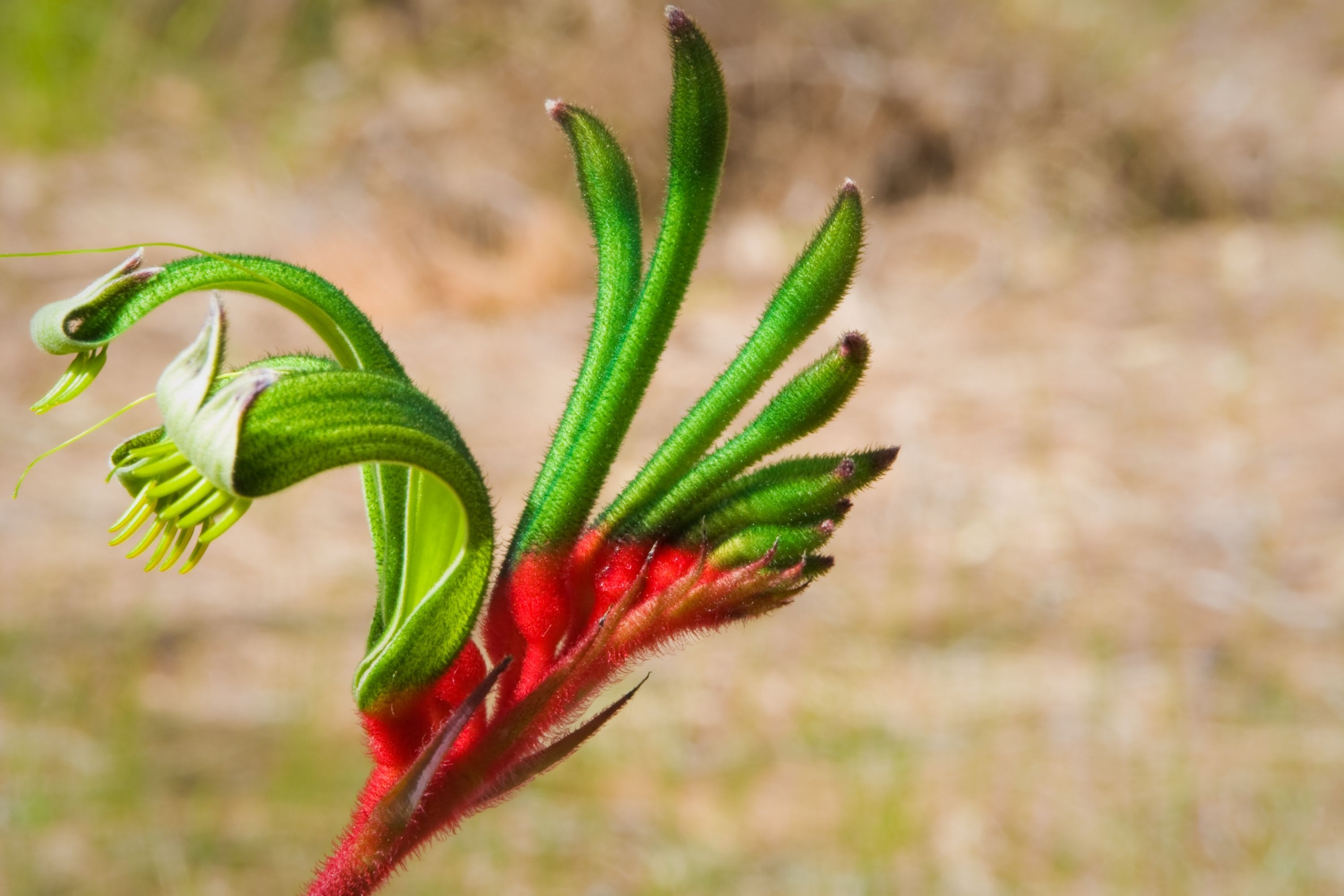Dwarf kangaroo paw
(Anigozanthos gabrielae)

Description
Anigozanthos gabrielae is a species of Anigozanthos in the family Haemodoraceae known as dwarf kangaroo paw. This flowering, rhizomatous, perennial plant is endemic to Southwest Australia and grows on sand in areas which are wet in winter. The species was first described by Karel Domin in the 1912 in the Journal of the Linnean Society, Botany. Anigozanthos gabrielae has flat leaves, which are from 20 to 120 mm long and 0.8 to 3 mm wide. It has no hairs or bristles on the leaf margins, nor does it have hairs on the leaf surface. The scape is hairy, and from 90 to 230 mm long. A bract (9-30 mm long) subtends the inflorescence, which has several flowers. The bracts for each flower are 6.5-15 mm long and each flower is on a stem which is from 2 to 6.5 mm long, while the flowers are from 20 to 39 mm long. The perianth is hairy, and has bilateral symmetry. It is both red and green, with six tepals. There are six stamens, in pairs at three levels. The stamen filaments are 1.5-2.3 mm long, and the anthers are without an appendage and 1.5-2.4 mm long. Style 18-28 mm long. It flowers in September or October. Anigozanthos is a genus of Southwest Australian plants of the bloodwort family Haemodoraceae. The 11 species and their subspecies are commonly known as kangaroo paw or catspaw, depending on their size, and the shape and color of their flowers. A further species, previously identified as Anigozanthos fuliginosus (black kangaroo paw), was separated to a monotypic genus as Macropidia fuliginosa. The species are recognised by their unusual flowers, numerous hybrids have been developed for cultivation and floristry. The red-and-green kangaroo paw is the floral emblem of Western Australia. These perennials are endemic to dry sandy, siliceous areas of southwest Australia, but they occur as well in a variety of other environments and soil types. They are grown commercially in Australia, the United States, Japan and Israel. The plant grows from short, underground, horizontal rhizomes. The length and the character of these may vary between the species: some are fleshy, others are fragile. The sap in the root system allows the plants to survive extreme dry spells. In summer, a number of species die back to the rhizome, growing back in autumn. The plants have a basal rosette of long green to greyish-green leaves. The leaves of some species are hairy. From the heart of this roset merge long leafless stalks, which can reach 2m, ending in a raceme of flowers.
Taxonomic tree:







